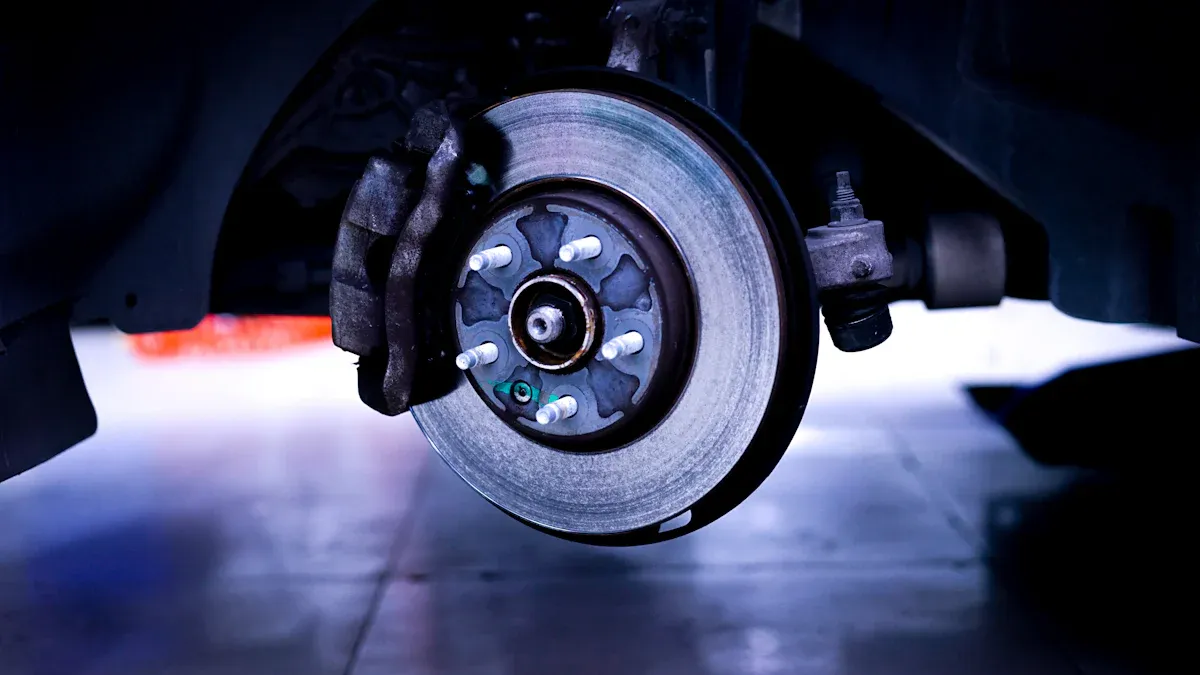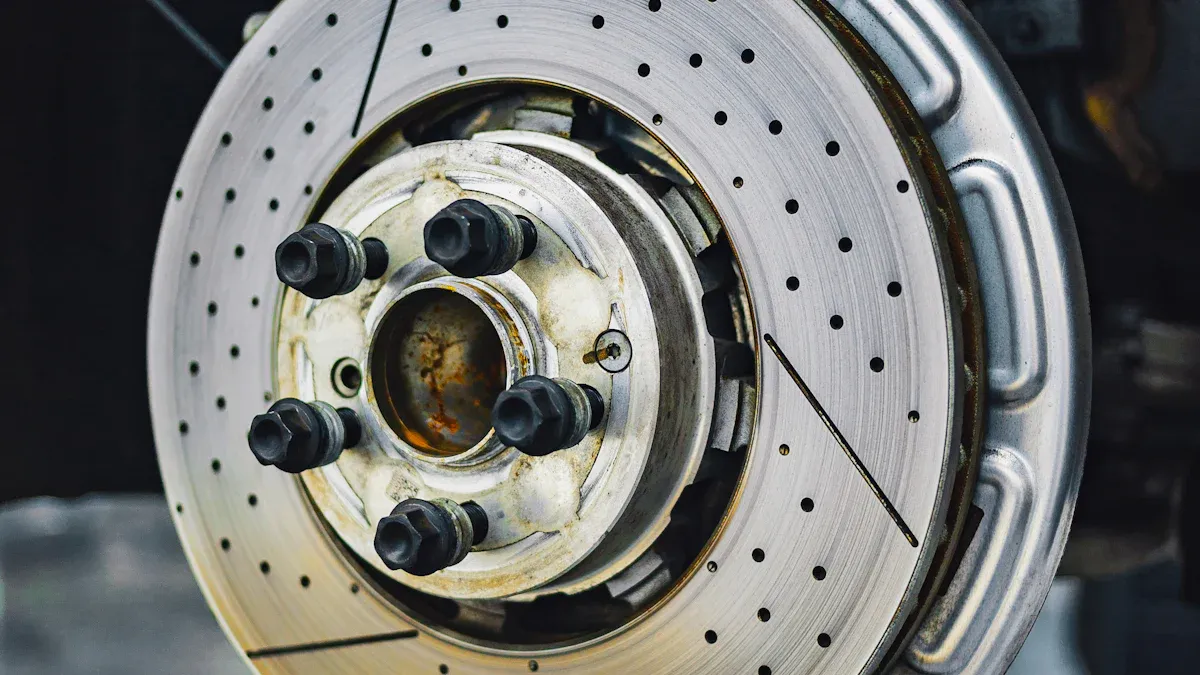
Electric vehicles demand advanced braking solutions due to regenerative braking and limited cooling airflow. The SiC coating process improves thermal stability by enhancing heat resistance and wear durability. Technologies like cvd sic coating ensure consistent performance in extreme conditions. By applying sic coating auto components, manufacturers optimize safety and efficiency. Sic coating car systems represent innovation in EV technology.
Key Takeaways
- SiC Coating helps brakes stay stable in high heat, keeping them reliable.
- It spreads heat better and reduces damage, making brakes last longer and saving money on repairs.
- By improving safety and performance, SiC Coating aids new brake systems, making it important for electric cars’ future.
Importance of Thermal Stability in EV Brake Systems

Why EVs Require Advanced Thermal Stability
Electric vehicles (EVs) operate under unique conditions that demand superior thermal stability in their brake systems. Unlike traditional vehicles, EVs rely heavily on regenerative braking, which reduces the use of mechanical brakes but generates heat in different ways. This process, combined with the reduced airflow around EV components due to aerodynamic designs, creates a challenging environment for thermal management.
Lower operating temperatures in EV brake systems minimize material expansion and contraction, reducing wear and tear. The use of high-carbon brake discs further enhances heat dissipation, improving braking performance and reducing fading behavior. Additionally, electric motors generate less heat during operation, which decreases thermal stress on brake components. These factors collectively highlight the need for advanced thermal solutions, such as SiC Coating, to maintain optimal performance and safety.
| Performance Improvements in EV Brake Systems | Details |
|---|---|
| Lower operating temperatures | Reduces material wear and tear |
| High-carbon brake discs | Enhances heat dissipation and reduces fading behavior |
| Reduced thermal stress | Extends component lifespan and improves overall thermal stability |
Limitations of Traditional Brake Systems in EVs
Traditional brake systems face significant challenges in meeting the thermal demands of EVs. Materials with varying thermal conductivities struggle to manage heat effectively, leading to inconsistent performance. The shift from pure metal brake pads to semi-metallic, ceramic, or organic composites underscores the need for improved cooling efficiency.
- Traditional systems rely on outdated materials with limited thermal conductivity.
- Semi-metallic and ceramic composites highlight the need for lighter, more efficient designs.
- Ineffective thermal management compromises braking performance and safety in EVs.
These limitations emphasize the importance of adopting advanced technologies like SiC Coating to enhance thermal stability and ensure reliable performance in electric vehicles.
SiC Coating: Properties and Applications

Key Features of SiC Coating
SiC Coating offers a range of properties that make it ideal for automotive brake systems. Its outstanding thermal conductivity ensures efficient heat transfer, preventing overheating during intense braking. Low thermal expansion minimizes material deformation under high temperatures, maintaining structural integrity. Additionally, its excellent thermal shock resistance allows it to withstand rapid temperature changes without cracking or degrading.
The mechanical properties of SiC Coating further enhance its appeal. High hardness and stiffness provide superior wear resistance, ensuring durability even under heavy loads. Functional Gradient Materials (FGMs) with SiC exhibit stable thermo-mechanical performance, combining the stiffness of ceramics with the ductility of metals. This unique combination makes SiC Coating a reliable choice for demanding applications.
| Property | Description |
|---|---|
| Thermal Conductivity | Efficient heat transfer prevents overheating. |
| Thermal Shock Resistance | Withstands rapid temperature changes without degradation. |
| Mechanical Characterization | Stable thermo-mechanical properties under tensile and impact loads. |
| Performance | High stiffness and wear resistance with added ductility from metal content. |
Application of SiC Coating in Brake Systems
SiC Coating plays a critical role in enhancing the performance of brake systems, particularly in electric vehicles. It provides thermal stability and oxidation protection for components exposed to high temperatures. For instance, SiC coatings on graphite substrates used in Metal Organic Chemical Vapor Deposition (MOCVD) processes ensure the integrity of thin films under extreme conditions.
Experimental studies highlight the coating’s ability to improve heat resistance and wear durability. When exposed to temperatures exceeding 300 °C, SiC bonds form within the coating, significantly reducing wear rates. This improvement ensures consistent braking performance and extends the lifespan of brake components. By integrating SiC Coating into brake systems, manufacturers can achieve superior thermal management and durability, addressing the unique demands of electric vehicles.
Benefits of SiC Coating for Electric Vehicles
Enhanced Heat Dissipation and Thermal Stability
SiC Coating significantly improves heat dissipation in electric vehicle brake systems. Its high thermal conductivity allows heat to transfer efficiently, preventing excessive temperature buildup during braking. This property ensures that brake components maintain optimal performance even under intense conditions. The coating also minimizes thermal expansion, reducing the risk of material deformation.
Thermal stability is critical for electric vehicles, where regenerative braking generates unique heat patterns. SiC Coating addresses this challenge by maintaining consistent performance across a wide temperature range. This stability enhances the reliability of braking systems, ensuring safety and efficiency during prolonged use.
Tip: Enhanced thermal stability not only improves performance but also extends the lifespan of brake components, reducing maintenance costs for EV owners.
Increased Durability and Wear Resistance
The mechanical properties of SiC Coating make it an ideal choice for durability. Its high hardness and stiffness provide superior resistance to wear, even under heavy braking loads. This durability ensures that brake components withstand the demands of daily use without compromising performance.
SiC Coating also protects against oxidation and corrosion, which are common issues in high-temperature environments. By forming a robust barrier, the coating preserves the integrity of brake components, reducing the need for frequent replacements. This increased wear resistance contributes to the long-term reliability of electric vehicle brake systems.
Contribution to EV Safety and Performance
Safety is a top priority in electric vehicle design, and SiC Coating plays a vital role in achieving this goal. By enhancing thermal stability and durability, the coating ensures consistent braking performance under various conditions. This reliability reduces the risk of brake failure, improving overall vehicle safety.
The improved heat dissipation provided by SiC Coating also enhances braking efficiency. Drivers experience smoother and more responsive braking, which contributes to a safer driving experience. Additionally, the coating supports the performance of advanced braking technologies, such as regenerative braking, by managing heat effectively.
Note: SiC Coating not only boosts safety but also aligns with the sustainability goals of electric vehicles by reducing material waste and energy consumption.
SiC Coating revolutionizes car brake systems by enhancing thermal stability and performance. Its ability to improve heat dissipation, durability, and safety makes it indispensable for electric vehicles. Ningbo VET Energy Technology Co. leads the industry with cutting-edge SiC-based solutions, driving advancements in EV technology and ensuring superior braking systems for the future.
FAQ
What makes SiC coating ideal for EV brake systems?
SiC coating offers high thermal conductivity, wear resistance, and durability. These properties ensure reliable performance under extreme conditions, making it perfect for electric vehicle brake systems.
How does SiC coating improve braking efficiency?
The coating enhances heat dissipation and minimizes thermal expansion. This ensures consistent braking performance, smoother operation, and reduced wear on brake components.
Is SiC coating environmentally friendly?
Yes, SiC coating aligns with sustainability goals. It reduces material waste, extends component lifespan, and supports energy-efficient braking technologies in electric vehicles.
Tip: SiC coating not only boosts performance but also contributes to the long-term reliability of EV brake systems.






